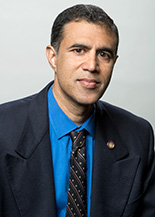

Dr. Amol Saxena, DPM
Palo Alto Foundation
Medical Group
Dept. of Sports Medicine
3rd Floor, Clark Building
795 El Camino Real
Palo Alto, CA 94301
Office: 650-853-2943
Fax: 650-853-6094
E-Mail
Map | Directions

| Foot Related Injuries & Treatments |
Sever's Disease/Calcaneal Apophysitis
One of the most common complaints of youth athletes is heel pain. This generally occurs during the early portion of the growth phase around 8-10 years old, and can recur towards the end of growth, (14-16 years old). Symptoms are typically in the back portion of the heel, can occur unilaterally or bilaterally, usually having a gradual onset. The heel bone’s growth plate is in this area, which is immature soft bone and cartilage. A “tug of war” occurs in this region from the foot growing longer and the leg bones getting taller, which puts tension on this heel bone area known as the calcaneal apophysis. The inflammation is called calcaneal apophysitis or “Sever’s disease”.
Activities with more impact and running aggravate the pain, which can be a throbbing, aching discomfort. Thin and hard soled shoes also can aggravate the condition. Cleated shoes can actually accentuate the tension on the area; grass cleats are worse as they can actually have a “negative” heel. Turf cleats are better due to the higher heel and more cushion. Even if games are played on grass, turf shoes usually work better as symptoms are less.
In addition to using turf cleats for athletes in sports such as soccer, football, baseball, and field hockey, adding heel cushions can help. Stretching, icing may have temporary benefit. Xray’s and other imaging usually are not helpful. Sometime inserts to help address other foot deformities can help, but usually just heel elevation is sufficient. The other key item in controlling symptoms, is activity modification and even reduction.
Sometimes calcaneal apophysitis worsens and becomes a stress fracture. The symptoms become more constant and patients have swelling, it hurts to hop on the involved limb and to squeeze the heel. The treatment at this point is rest and immobilization in a boot. Other conditions that can occur in this area are an “avulsion” or displacement of the growth plate and bursitis in the back of the heel. An avulsion happens from a severe landing on the heel, whereas bursitis (aka “pump bump” or “Haglund’s”) is more of chronic condition due to prominent portion of the heel.
Calcaneal apophysitis is generally self-limiting and resolves after 6-12 months. Maintaining cushioning, proper shoes and activity modification is key at controlling symptoms. It is really not a disease, but rather a common condition of active youth athletes.
Home | About Dr. Saxena | Articles | Appointments | Shoe List | Orthoses
Medial Distal Tibial Syndrome (Shin Splints) | Sever's Disease/Calcaneal Apophysitis
Ankle Sprains & Calf Strains | Injury Prevention | Heel Pain | Achilles Heel | Ankle Stretching, Rehabilitation & Taping
Return to Sports After Injury | Cycling | Marathons | Videos | Recommended Books | Links
Friends & Patients | Legal Notice | Privacy Statement | Site Map
Copyright © Amol Saxena, DPM - Sports Medicine & Surgery of the Foot & Ankle
Web Site Design, Hosting & Maintenance By Catalyst Marketing Innovations, LLC/ Worry Free Websites



